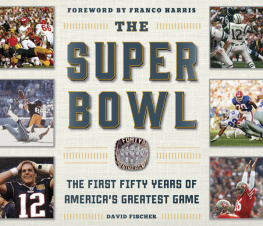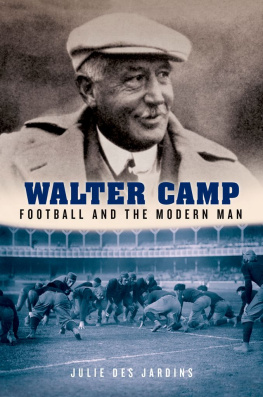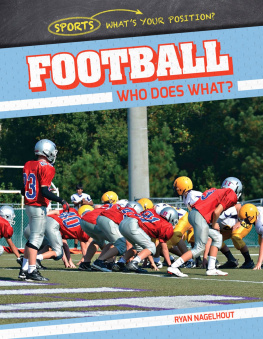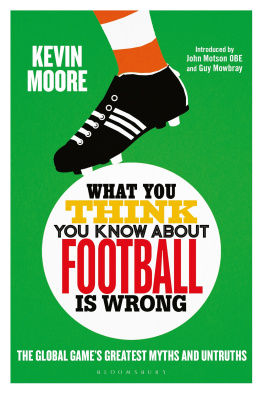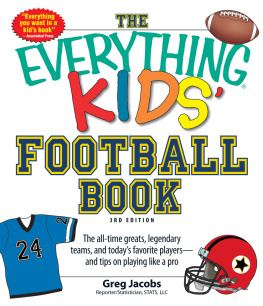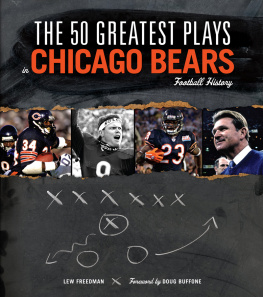FOOTBALL
AND ITS GREATEST PLAYERS
FOOTBALL
AND ITS GREATEST PLAYERS
EDITED BY MICHAEL ANDERSON

Published in 2012 by Britannica Educational Publishing
(a trademark of Encyclopdia Britannica, Inc.)
in association with Rosen Educational Services, LLC
29 East 21st Street, New York, NY 10010.
Copyright 2012 Encyclopdia Britannica, Inc. Britannica, Encyclopdia Britannica, and the
Thistle logo are registered trademarks of Encyclopdia Britannica, Inc. All rights reserved.
Rosen Educational Services materials copyright 2012 Rosen Educational Services, LLC.
All rights reserved.
Distributed exclusively by Rosen Educational Services.
For a listing of additional Britannica Educational Publishing titles, call toll free (800) 237-9932.
First Edition
Britannica Educational Publishing
Michael I. Levy: Executive Editor, Encyclopdia Britannica
J.E. Luebering: Director, Core Reference Group, Encyclopdia Britannica
Adam Augustyn: Assistant Manager, Encyclopdia Britannica
Anthony L. Green: Editor, Comptons by Britannica
Michael Anderson: Senior Editor, Comptons by Britannica
Sherman Hollar: Associate Editor, Comptons by Britannica
Marilyn L. Barton: Senior Coordinator, Production Control
Steven Bosco: Director, Editorial Technologies
Lisa S. Braucher: Senior Producer and Data Editor
Yvette Charboneau: Senior Copy Editor
Kathy Nakamura: Manager, Media Acquisition
Rosen Educational Services
Jeanne Nagle: Senior Editor
Nelson S: Art Director
Cindy Reiman: Photography Manager
Karen Huang: Photo Research
Matthew Cauli: Designer, Cover Design
Introduction by Jeanne Nagle
Library of Congress Cataloging-in-Publication Data
Football and its greatest players / edited by Michael Anderson.
p. cm.(Inside sports)
In association with Britannica Educational Publishing, Rosen Educational Services.
Includes bibliographical references and index.
ISBN 978-1-61530-560-5 (eBook)
1. FootballUnited StatesHistoryJuvenile literature. 2. Football playersUnited
StatesBiographyJuvenile literature. I. Anderson, Michael, 1972
GV950.7.F66 2012
796.332092dc22
2011000082
On the , page 3: Drew Brees, quarterback of the NFLs New Orleans Saints, in 2010. Chris Graythen/Getty Images
Pages www.istockphoto.com/Mark Stahl; pp. 19, 32, 45, 46, 54 www.istockphoto.com/Mark Herreid; p. 53 (graphic) www.istockphoto.com/ Brandon Laufenberg; back cover, remaining interior background image Shutterstock.com
CONTENTS



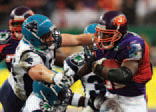

INTRODUCTION

I f Americans were to think of their brand of football as a product, it might be hard to decide if the sport is an import or an export. As evidence of the former, consider how modern gridiron football came to be. The games roots reach back to 19th-century England, where rugby originated and became a popular pastime. Rugby, which can be described as a full-contact version of soccer that hinges on players carrying, rather than kicking, a ball, was imported to the United States in the late 1800s. Many East Coast colleges, including Yale and Princeton, formed teams that played a rugby-style game.
The game underwent a few changes once it came to the United States. Two of the most important early rule changes, dating from the 1880s, made the game more orderly. The first established a scrimmage, which awarded possession of the ball to one of the two teams, and the second created the system of downs, which required a team to advance the ball or lose possession of it. By 1920, gridiron football moved beyond the thriving college ranks and became a professional sport with the start of the National Football League (NFL). Gradually many of the rules and procedures of American football were adopted by Canadian teams, which up until then had mostly played a rugby-style game. American football also was exported to other countries beginning in 1991, first with the formation of a European professional league and later with the scheduling of NFL games abroad.
Whether it is an import or export, gridiron football today is a distinctly American sport. Virtually everything about the modern game was developed in the United States. The popularity of this type of football is undeniable. In some parts of the U.S., football fan devotion, particularly at the high school and college level, is so strong and sincere that the sport has been likened to a religion. College and professional games are televised every weekend and a few nights a week during the fall season. These broadcasts get good ratings. Also, the Super Bowl, which is the NFLs championship game, is watched by an international television audience numbering in the tens of millions.

A football on the field, awaiting kickoff. Shutterstock.com
A big part of what makes gridiron football so popular is the personalities involved. Many players and coaches have contributed to making the game what it is today. Modern-day Hall of Famers and current marquee players, including Emmitt Smith and Peyton Manning, respectively, are recognized by football fans around the globe.
Some names from the early days of football may not be as recognizable, but their contributions are certainly well known. For instance, Walter Camp, the coach who is considered the Father of American Football, was the head of the rules committee that was formed soon after the game came to the United States. In addition to introducing the scrimmage and the system of downs, Camp was responsible for determining the dimensions of the playing field and the number of players on the field, among other fundamentals of the game.
Another coach, Glenn (Pop) Warner, has been honored for his accomplishments and innovations during his long career by having a national youth football program named after him. Pop Warner Youth Football, which operates programs in 42 states, emphasizes the development of game skills and academic excellence. In recognizing Coach Warner while also cultivating the next generation of players both on and off the field, the program connects footballs past with its present and future.
CHAPTER 1
ORGANIZED FOOTBALL

T he word football can mean many things, depending on where you are in the world. In North America it means gridiron football. The gridiron game, which takes its name from the distinctive line markings on the playing field, is a full contact game played primarily in the United States and Canada. It is known for violent collisions, high emotions, and spectacular athleticism. Gridiron football pits two teams against each other, each trying to move a ball into the other teams goal.
Next page







